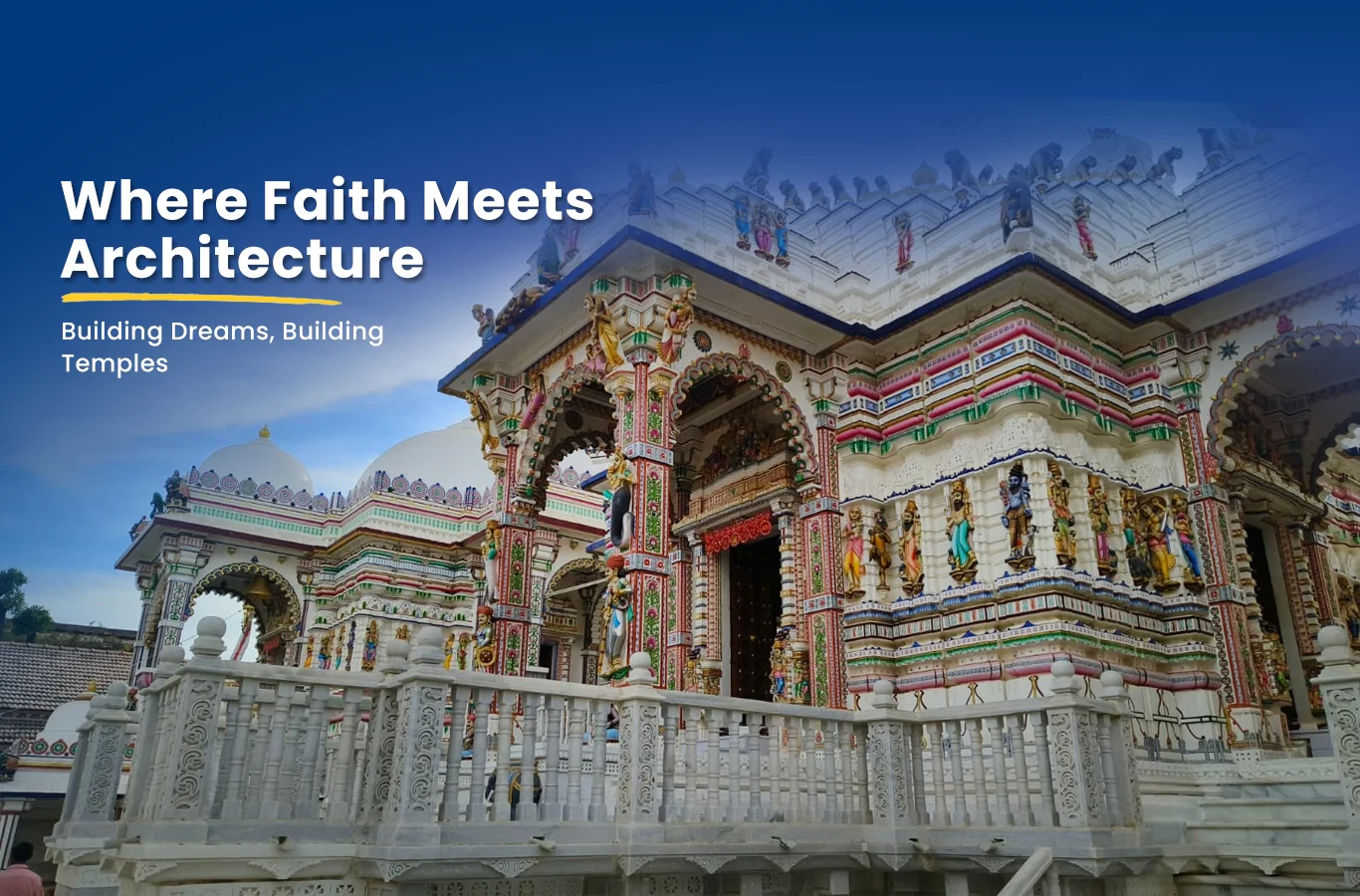Building a temple is a deeply spiritual and intricate process that combines traditional wisdom with modern techniques. The expertise of a temple architect in India, especially those from the Sompura community, ensures that these sacred structures preserve ancient traditions. In Rajasthan, temple construction services play a significant role in maintaining India’s rich architectural heritage
This article outlines the key steps in constructing a temple, emphasizing the importance of design, materials, and craftsmanship.
The Importance of Temple Construction
Temples are not just physical structures; they are spiritual sanctuaries designed to foster a connection between devotees and the divine. The process of building a temple is guided by principles from Vastu Shastra and Shilpa Shastra, ensuring harmony, balance, and spiritual resonance.
Steps in the Temple Construction Process
1. Conceptualization and Planning
Understanding Religious and Cultural Requirements
The process begins with understanding the religious significance and cultural traditions that the temple must reflect. Architects and priests collaborate to ensure the design aligns with the community’s spiritual needs.
Role of the Temple Architect
A temple architect in India, especially those with expertise in Jain temples, plays a crucial role during this phase. They use their knowledge of sacred texts to create designs that embody spiritual symbolism. The Sompura architects, known for their work on Jain temples, are particularly skilled in this area.
2. Site Selection and Orientation
Choosing the Right Location
The location of the temple is chosen based on its spiritual significance and accessibility. In Rajasthan, temple sites are often selected for their proximity to natural beauty, such as hills or rivers, which enhance the temple’s sanctity.
Orienting the Structure
The temple is oriented according to Vastu Shastra principles, ensuring that it faces the right direction (usually east) to harness positive energy.
3. Design and Architectural Planning
Creating the Blueprint
Once the site is selected, the temple architect prepares detailed blueprints. These include floor plans, elevations, and cross-sections, ensuring the temple’s proportions are precise and harmonious.
Incorporating Traditional Elements
For Jain temples, specific features like the Garbha Griha (sanctum sanctorum), Mandapa (assembly hall), and Shikharas (spires) are designed according to traditional guidelines. Sompura artisans, with their expertise in Jain Temple Sompura , ensure that every element reflects the religion’s values.
4. Material Selection
Using Natural and Local Materials
Materials like marble and sandstone are commonly used, especially in Rajasthan. For example, Makrana marble, known for its durability and beauty, is a preferred choice for Jain temples.
Sustainability in Material Choice
Temple construction services in Rajasthan prioritize sustainable materials and eco-friendly practices to preserve the environment while maintaining traditional aesthetics.
5. Foundation Laying and Rituals
Performing Bhoomi Pooja
The construction process begins with Bhoomi Pooja, a ritual to seek blessings from the Earth. This ceremony is an essential part of temple construction in India.
Laying the Foundation
The foundation is laid using strong and durable materials to ensure the temple’s longevity. Special attention is given to align the foundation with the design’s geometric precision.
6. Structural Construction
Building the Core Structure
The main structure, including walls, pillars, and domes, is built using traditional techniques. Skilled masons and artisans, often guided by Sompura architects, meticulously carve and assemble these elements.
Focus on Shikharas and Mandapas
The Shikharas (spires) and Mandapas (halls) are constructed with intricate details that symbolize spiritual ascent and communal gathering, respectively.
7. Carving and Ornamentation
Intricate Stone Carving
Carving is one of the most labor-intensive steps, requiring the expertise of artisans to create intricate designs. Jain temples, in particular, feature detailed carvings of Tirthankaras, floral motifs, and celestial beings.
The Role of Sompura Artisans
The Sompura artisans are renowned for their ability to blend functionality with aesthetic beauty. Their work ensures that every carving reflects spiritual themes while adhering to architectural principles.
8. Installation of Deities and Final Touches
Idol Placement
The main deity is installed in the sanctum sanctorum in a ceremony called Prana Pratishtha, where the idol is consecrated with rituals to infuse it with divine energy.
Polishing and Painting
Final touches, such as polishing the marble and painting decorative elements, are completed to enhance the temple’s visual appeal.
9. Inauguration and Consecration
Ceremonial Opening
The temple is inaugurated with grand ceremonies involving the local community. These rituals mark the temple’s readiness for worship.
Ongoing Maintenance
Temple construction services in Rajasthan often offer maintenance services to ensure the structure remains pristine and functional over the years.
Challenges in Temple Construction
Balancing Tradition with Modern Needs
Modern temples often need amenities like parking, electricity, and accessibility features. Integrating these without compromising traditional designs is a significant challenge for Temple Architect in India.
Preserving Artisanal Skills
The decline in traditional craftsmanship poses a challenge. Communities like the Sompura artisans need support to continue their work and pass their skills to the next generation.
The Role of Temple Construction Services in Rajasthan
Rajasthan has emerged as a hub for temple construction due to its rich heritage and availability of skilled artisans and high-quality materials. Professional services offer a comprehensive approach, ensuring that every step—from design to execution—is handled with precision and respect for tradition.
Conclusion
The temple construction process is a harmonious blend of spirituality, artistry, and engineering. Guided by the expertise of a temple architect in India, particularly the Sompura artisans, and supported by reliable Temple Construction Service in Rajasthan, this process ensures the creation of sacred spaces that inspire devotion and reflect India’s cultural heritage.
By preserving ancient traditions while embracing modern innovations, temple construction continues to be a profound expression of faith and craftsmanship.

